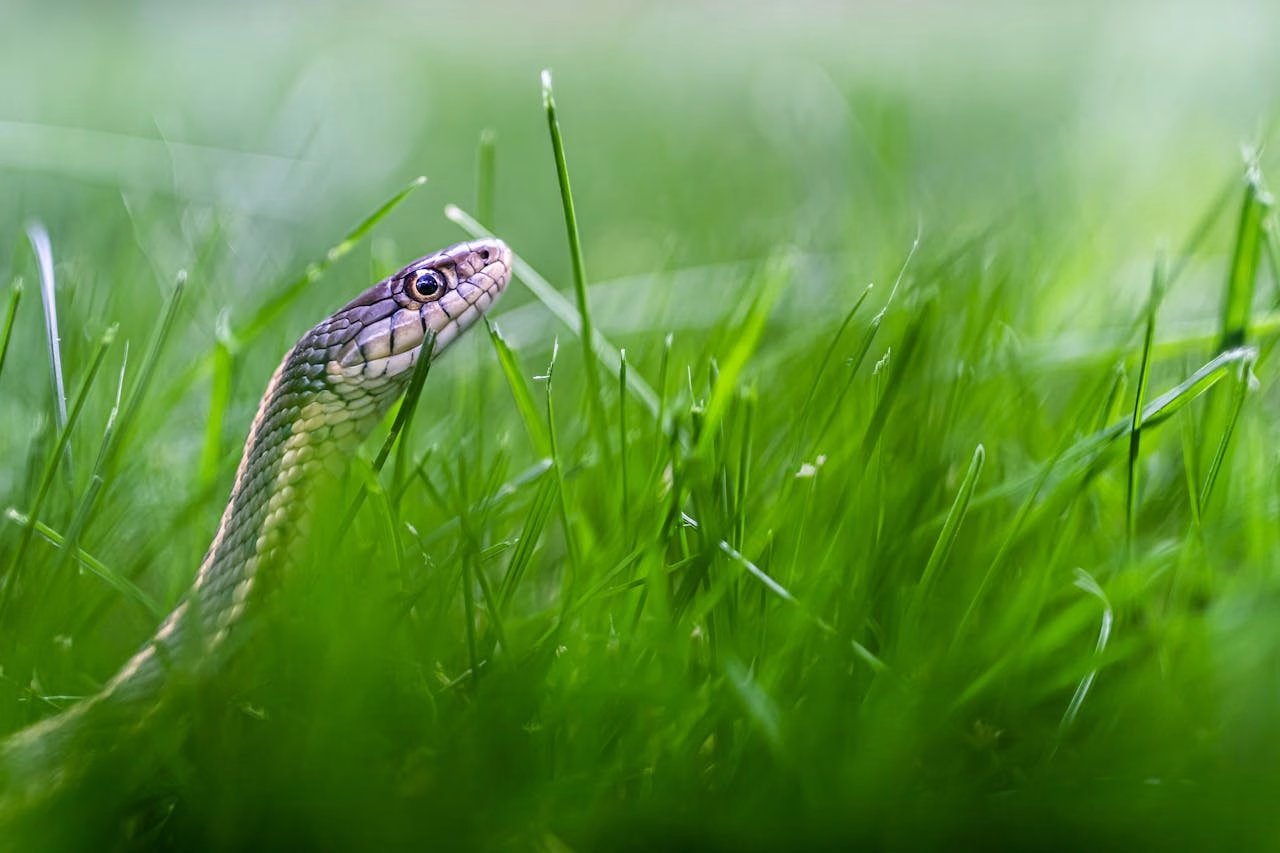When Autumn Turns a Garden Into Shelter
As soon as leaves begin to fall, most of us take comfort in the season’s rhythm. Trees shed their colours, gardens soften, and blankets of golden debris gather quietly on the ground. Many homeowners create tidy piles of leaves or spread them as mulch to protect soil through winter. It feels responsible, natural, even kind to the earth.
Yet beneath that soft layer lies a surprise many people never consider: those leaf piles are exactly where snakes seek refuge.
Snakes do not fully hibernate. They slow down, conserve energy, and look for places that offer warmth, darkness, and protection. Autumn leaf piles create perfect micro-habitats, warm enough to shield them from cold nights, thick enough to hide them from predators, and rich in tiny prey that also seek shelter.
Most homeowners never realize that a single leaf mound can attract an entire miniature ecosystem, including reptiles.
Why Snakes Choose Leaf Piles
Snakes follow logic older than human gardening habits. They search for:
- Warmth: Even a thin layer of leaves traps heat, especially when the pile sits against a wall or fence that absorbs sunlight during the day.
- Safety: Dry layers of organic matter make excellent hiding spots. To a snake, a leaf pile is like a small cave, silent, dark, insulated.
- Food: Leaf piles attract insects, snails, and small mammals. These prey animals bring snakes right behind them.
- Moisture: Autumn moisture settles into the ground and holds beneath the leaves, creating a stable micro-climate for reptiles.
For a gardener, a leaf pile represents seasonal maintenance. For a snake, it’s a complete survival package.
This doesn’t mean snakes move into gardens with hostile intentions. European snakes, including grass snakes and smooth snakes, tend to avoid humans. Their presence signals that the garden supports life in many forms. Still, accidental encounters can startle both species, especially when someone clears leaves, moves a log, or reaches into a compost heap.
The Garden Becomes a Quiet Refuge
Autumn brings a moment when the natural world begins withdrawing. Birds travel south, pollinators disappear, hedgehogs seek hidden nests, and amphibians disappear beneath wet logs. Snakes follow the same instinctive rhythm.
When leaves pile up, gardens transform into pockets of warmth in a cooling landscape. These pockets gather more wildlife than most people imagine.
One pile of leaves can host insects, beetles, worms, mice, frogs, and salamanders, a layered community. Snakes follow these signals. They don’t hunt with malice; they respond to scent trails that guide them to food and shelter.
Understanding this helps shift fear into knowledge. A snake in the garden is not a threat; it is a quiet participant in the ecosystem. It helps control rodents, protects vegetable beds from unwelcome guests, and keeps natural balance intact.
Still, gardens are shared spaces. And when wildlife settles too close to entryways, sheds, or children’s play areas, homeowners benefit from learning how to guide nature gently.
How to Keep Balance Without Fear
If you enjoy wildlife but prefer fewer reptilian surprises near your house, simple adjustments can help:
- Move leaf piles farther from the house.
A corner of the yard, under a hedge, or near a compost bin works well. - Handle autumn debris with gloves.
Snakes rarely bite unprovoked, but they react defensively when surprised. - Keep firewood stacks away from doorways.
Wood piles retain heat and become winter shelters. - Allow one “wild corner.”
A small, undisturbed area satisfies wildlife without crowding human spaces.
These choices let you support biodiversity while keeping daily life comfortable.
Understanding the Rhythm of Nature
Autumn leaf piles seem simple, almost gentle, but they shape entire habitats. A warm, quiet mound of leaves holds stories of survival long before gardeners step outside with a rake. Snakes choose these places not because they want to be near humans but because nature directs them toward shelter that promises safety.
At Pawlore, we explore these hidden connections. Every pet and every wild animal carries instincts shaped by time. When we understand these instincts, we learn how to share space more wisely. A garden can be both a home for people and a refuge for other species. It begins with awareness.
So when you kneel beside a leaf pile this autumn, pause. Something small may rest beneath, a creature waiting for warmth, protecting itself from the cold, trusting the world to remain patient as winter approaches.
Related Articles:


